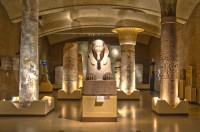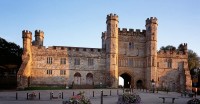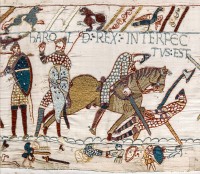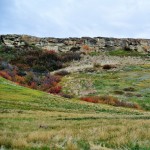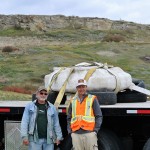A scandalous and deadly mystery may soon be solved thanks to the sciency magic of DNA. The setting: Leine Castle in Niedersachsen, Germany, the residence of the Electors of Hanover and future Hanoverian kings. The players: Sophia Dorothea, the wife of the future King George I of Great Britain, her churlish husband, then Prince George Ludwig of Hanover, Sophia Dorothea’s lover, Count Philip Christoph von Königsmarck, her father-in-law Ernest Augustus, the Elector of Hanover, and the Countess von Platen, the Elector’s mistress and a schemer of Evil Queen in Snow White dimensions.
 Sophia Dorothea had been forced to marry George Ludwig through the machinations of Sophia of Hanover, George’s mother and granddaughter of King James I of England, who sabotaged her other engagements and persuaded her mother, Countess Eleanor of Wilhelmsburg, of the advantage of the match. Her future mother-in-law’s motivation was purely pecuniary. Sophia Dorothea came with a rich income of 100,000 thaler a year (one thaler was worth 25 grams of silver, 10 times more than the English pound), and while George had zero personal charms (in Hanover he was known as “pignose” and his own mother considered him stupid and brutish) he had the powerful Electorate of Hanover coming his way and was also in line for the British crown.
Sophia Dorothea had been forced to marry George Ludwig through the machinations of Sophia of Hanover, George’s mother and granddaughter of King James I of England, who sabotaged her other engagements and persuaded her mother, Countess Eleanor of Wilhelmsburg, of the advantage of the match. Her future mother-in-law’s motivation was purely pecuniary. Sophia Dorothea came with a rich income of 100,000 thaler a year (one thaler was worth 25 grams of silver, 10 times more than the English pound), and while George had zero personal charms (in Hanover he was known as “pignose” and his own mother considered him stupid and brutish) he had the powerful Electorate of Hanover coming his way and was also in line for the British crown.
So in 1682, the 16-year-old Sophia Dorothea married her first cousin Prince George Ludwig of Hanover, the future King George I of Great Britain. From day one the marriage was turbulent. They fought all the time, in private and public, and George slighted her at ceremonial occasions. Despite their active contempt for each other, they managed to reproduce twice: the future George II was born in 1683, Sophia Dorothea, the future Queen of Prussia, was born in 1687.
 By then relations between the two were irretrievably broken, if they had ever been whole. George took a mistress whom he flaunted so shamelessly that his own father begged him to be more discreet for appearance’s sake, if nothing else. George ignored him, and instead took more mistresses whom he impregnated regularly. When he wasn’t violent and abusive to his wife, he acted as if she didn’t exist, humiliating her by raising his mistresses above her at court. Into this maelström walked Swedish count Philip Christoph von Königsmarck. He and Sophia Dorothea had met just before her marriage and had had an innocent flirtation. When the dashing count came back into her life, their relationship blossomed into a romance which we know quite a bit about because hundreds of their love letters have survived and are now in the collection of the Lund University library. Many of them are written in code, a necessity as the gossip around them intensified.
By then relations between the two were irretrievably broken, if they had ever been whole. George took a mistress whom he flaunted so shamelessly that his own father begged him to be more discreet for appearance’s sake, if nothing else. George ignored him, and instead took more mistresses whom he impregnated regularly. When he wasn’t violent and abusive to his wife, he acted as if she didn’t exist, humiliating her by raising his mistresses above her at court. Into this maelström walked Swedish count Philip Christoph von Königsmarck. He and Sophia Dorothea had met just before her marriage and had had an innocent flirtation. When the dashing count came back into her life, their relationship blossomed into a romance which we know quite a bit about because hundreds of their love letters have survived and are now in the collection of the Lund University library. Many of them are written in code, a necessity as the gossip around them intensified.
Some of those letters were intercepted and shown to George Ludwig’s father Ernest Augustus, Elector of Hanover, who exiled Königsmarck from Hanover. George and Sophia Dorothea fought angrily over her affair and his many affairs (complete with illegitimate children). This argument turned violent, with George pulling out his wife’s hair and throttling her until she lost consciousness. Only the intervention of her attendants in the antechamber stopped the Prince from strangling his wife.
 It all came to a head in 1694. Königsmarck returned from banishment and was appointed Colonel of the Guards. Sophia Dorotea, desperate after repeated entreaties to her own family had failed, hoped to flee Hanover with the count. He received a note written in pencil asking him to visit her rooms one night. When he appeared, she was surprised. The note was a forgery. Notwithstanding the glaringly obvious setup, he stayed for a while as she told him how untenable her position had become and asked him to arrange for their flight to Wolfenbüttel, about 40 miles away, where a devoted friend of her mother lived. This was a fatal error.
It all came to a head in 1694. Königsmarck returned from banishment and was appointed Colonel of the Guards. Sophia Dorotea, desperate after repeated entreaties to her own family had failed, hoped to flee Hanover with the count. He received a note written in pencil asking him to visit her rooms one night. When he appeared, she was surprised. The note was a forgery. Notwithstanding the glaringly obvious setup, he stayed for a while as she told him how untenable her position had become and asked him to arrange for their flight to Wolfenbüttel, about 40 miles away, where a devoted friend of her mother lived. This was a fatal error.
The forged letter was part of a plot hatched by Clara Elisabeth, Countess von Platen, Ernest Augustus’ long-time mistress and mother of two of his children. She and her coterie had spread nasty rumors about Sophia Dorothea since the marriage, poisoning the court against her and contributing significantly to George’s hatred and public slights of his wife. As soon as she found out that Königsmarck had fallen for the forged note gambit, she told the Elector that Königsmarck was scandalously visiting Sophia Dorothea at night, and persuaded him to order his arrest.
He allowed countess to command the operation. She got three trabants (yeomen of the guard) and their commanding officer to wait for him behind a chimney that was his sole escape route out of the palace (she had locked all the other exits), and promptly got them drunk so they might be less likely to recognize the colonel and more likely to do him harm which was her aim all along although Ernest Augustus was clueless about her real intentions. When Königsmarck approached the chimney, he was set upon by the guards. A sword fight ensued, and though he was an outstanding soldier who might have actually pulled off a one-against-four-drunks victory in the dark, Königsmarck’s sword snapped and he was mortally wounded.
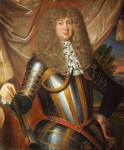 The guards were horrified when realized who they had stuck, but the Countess von Platen deftly turned it around on them. She said they’d be in huge trouble for killing him, so it was best if they told the Elector Königsmarck had rushed them in some berserker frenzy, forcing them to kill in self-defense. Ernest Augustus was shocked and appalled. He’d given the countess an inch and she’d taken a life. He knew the news of the death of so famously brave, handsome and popular a noble adventurer would surely spread like wildfire throughout Germany, and the Elector would be cast as the villain of the piece.
The guards were horrified when realized who they had stuck, but the Countess von Platen deftly turned it around on them. She said they’d be in huge trouble for killing him, so it was best if they told the Elector Königsmarck had rushed them in some berserker frenzy, forcing them to kill in self-defense. Ernest Augustus was shocked and appalled. He’d given the countess an inch and she’d taken a life. He knew the news of the death of so famously brave, handsome and popular a noble adventurer would surely spread like wildfire throughout Germany, and the Elector would be cast as the villain of the piece.
The Countess had a solution to that problem too. She got Ernest Augustus to agree to dispose of the body in such a way that the crime would never be publically known. The 1845 Memoirs of Sophia Dorothea, a pro-Sophia biography compiled from archives, letters and diaries, describes the aftermath thus:
The Countess had little trouble in persuading the trabants to save their necks by doing as she desired them. All traces of the murder were soon obliterated. The dead body was unceremoniously cast into the most filthy receptacle that could be found for it, covered with quick lime, and the place walled up. So secretly and so skilfully were these measures taken, that no one in the palace was aware anything extraordinary had occurred during the night, although some persons had heard a slight disturbance of which they had taken little notice, and from that time to this, notwithstanding suspicions had been created by the mysterious disappearance of Count Königsmarck, nothing of a positive nature has been brought forward respecting his fate on which any reliance could be placed.
This account is derived from the Countess von Platen’s deathbed confession and to that of one of the trabants. Other stories circulated. Author, member of Parliament and son of the frst Prime Minister of Great Britain Horace Walpole was told by his father who was told by Queen Caroline who was told by King George II that the Königsmarck was strangled upon leaving Sophia Dorotea’s room and his body had been found under the floor of her dressing room when George II was visiting Hanover after his ascension to the British throne.
That’s a bit too much of a game of telephone to be reliable data, but the discovery of a skeleton during construction work at Leine Castle this summer might just be the hard evidence this intrigue has long lacked. Unfortunately the cause of death could not be determined by osteological analysis, but researchers were able to extract DNA from the bones. The DNA will now be compared to living relatives of Count Philip Christoph von Königsmarck.
[youtube=https://youtu.be/5LJkKx4LzV0&w=430]
As for poor Sophia Dorothea, with her lover dead in such a messy way, George Ludwig felt empowered to divorce her and imprison her in the Castle of Ahlden in Lüneburg for the rest of her life, that’s 33 years out of 60. It wasn’t a brutal imprisonment; more of a house arrest life sentence. She had plenty of money to live in accordance with her status, was allowed her retinue and had the run of the castle, but her children were kept from her and every reference to her was erased from George’s future courts. Oh, and he kept that 100,000 thaler annuity even after her divorced her, of course. He really was a right bastard.
On her deathbed, she wrote one last letter to her husband, who had been King of Great Britain and Ireland for 12 years by then, cursing him. He refused to allow his courts in Hanover or England to officially mourn her, and even inveighed against their daughter when he heard the Prussian court in Berlin was wearing black for their queen’s mother. No wonder George II hated his father bitterly.
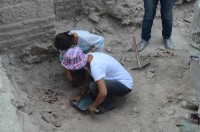 Archaeologists have discovered a unique trove of ancient medicine bottles in the ancient Greek town of Bathonea, 10 miles west of Istanbul. Usually made of ceramic or glass, although there are a few high-end examples made of alabaster and silver, the small bottles known as unguentaria were used in antiquity to hold everything from perfume and cosmetics to olive oil and powdered incense. They are often found in Greek burials as grave goods, but only a few in each grave. Larger numbers of unguentaria have been unearthed in ancient household rubbish dumps, discarded over a period of time after being broken.
Archaeologists have discovered a unique trove of ancient medicine bottles in the ancient Greek town of Bathonea, 10 miles west of Istanbul. Usually made of ceramic or glass, although there are a few high-end examples made of alabaster and silver, the small bottles known as unguentaria were used in antiquity to hold everything from perfume and cosmetics to olive oil and powdered incense. They are often found in Greek burials as grave goods, but only a few in each grave. Larger numbers of unguentaria have been unearthed in ancient household rubbish dumps, discarded over a period of time after being broken. 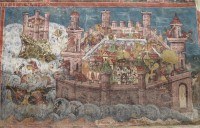 This roof of this facility collapsed in a fire, keeping its production line in place even if heavily damaged. Practically all of the structures so far excavated at Bathonea have the same fire layer. Samples from it were analyzed by the Wroclaw Archeology and Ethnography Institute in Poland which found that the carbon samples date to between 620 and 640. That date range is meaningful because the nomadic Avars joined forces with the Sassanid Persians and assorted Slavs to besiege Constantinople in 626. After two months of attacks from land and sea, the Avars and Persians retreated before the victorious Byzantines, but they did a lot of damage while they were there. Archaeologists think the fire that felled the Bathonea pharmacy may be evidence of the Avar attack. No other archaeological evidence of this clash has been found before.
This roof of this facility collapsed in a fire, keeping its production line in place even if heavily damaged. Practically all of the structures so far excavated at Bathonea have the same fire layer. Samples from it were analyzed by the Wroclaw Archeology and Ethnography Institute in Poland which found that the carbon samples date to between 620 and 640. That date range is meaningful because the nomadic Avars joined forces with the Sassanid Persians and assorted Slavs to besiege Constantinople in 626. After two months of attacks from land and sea, the Avars and Persians retreated before the victorious Byzantines, but they did a lot of damage while they were there. Archaeologists think the fire that felled the Bathonea pharmacy may be evidence of the Avar attack. No other archaeological evidence of this clash has been found before.



